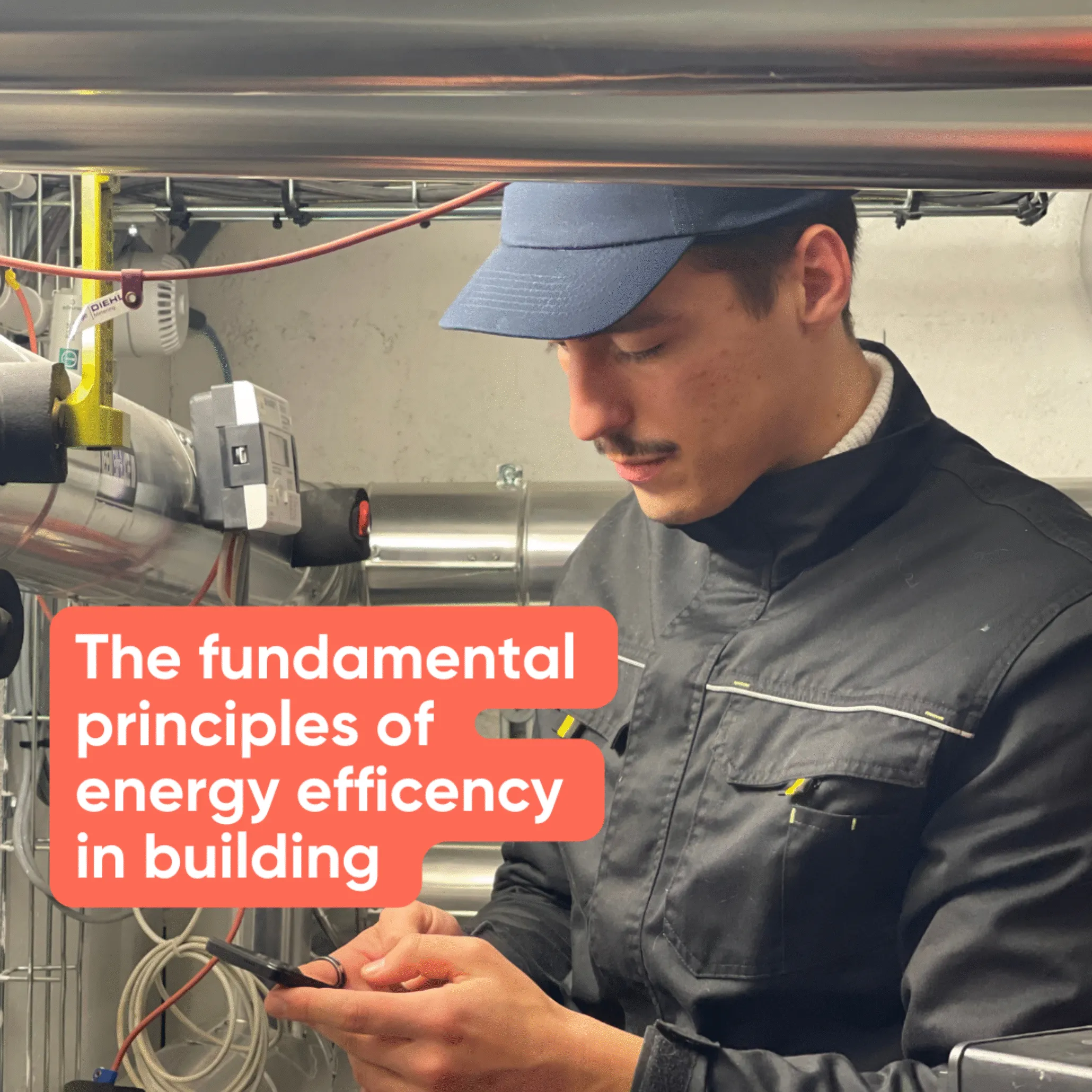The fundamental principles of energy efficency in building



The United Kingdom has set ambitious climate targets, aiming for a 78% reduction in greenhouse gas emissions by 2035 (compared to 1990 levels) and a trajectory toward carbon neutrality by 2050. In this context, the building sector — responsible for around 40% of the country’s total energy consumption — plays a central role.
Building energy performance is thus becoming a strategic lever, not only to reduce emissions but also to manage energy price volatility and meet increasingly stringent regulatory requirements (such as the 2021 update of Part L of the Building Regulations).
To meet these challenges, it is essential to adopt a comprehensive approach to energy performance, based on proven and up-to-date principles. Below are the technical and operational foundations that must be integrated into any project to ensure efficient and sustainable energy management.
1. Design with Performance in Mind
Energy efficiency begins long before the first brick is laid. A well-designed project can prevent unnecessary expenses for years to come. This involves:
- Optimizing the building’s orientation,
- Limiting heat-loss surfaces (compact forms, controlled glazed areas),
- Integrating passive strategies: solar gains, natural lighting, thermal mass, and natural ventilation.
Since 2021, strengthened UK regulations now require all projects to achieve increasingly ambitious levels of insulation and energy consumption, aligned with CO₂ emissions reduction targets.
2. Rely on Smart Control Systems
A poorly managed building is an energy-intensive building. Building management systems (BMS) make it possible to adjust energy consumption to actual usage by:
- Programming equipment based on occupancy schedules,
- Using presence and light sensors for lighting control,
- Dynamically controlling heating, ventilation, and air conditioning systems.
Recent advances in IoT and cloud solutions now allow even greater optimization, providing real-time visibility into usage and automatically triggering corrective actions.
3. Commission, Test, Adjust
Execution quality is critical. It is not enough to install the right equipment; it must also operate as intended. This requires:
- Pre-handover checks (technical commissioning, system balancing),
- Regular re-tuning of system settings (recommissioning),
- A post-occupancy review to compare theoretical performance with actual results.
This principle is now a key expectation in the most demanding quality frameworks, particularly in projects targeting Net Zero Carbon objectives.
4. Measure to Improve
You cannot optimize what you do not measure. It is essential to implement accurate monitoring of energy consumption:
- By usage (heating, domestic hot water, ventilation, lighting, etc.),
- By zone (offices, common areas, technical facilities),
- By comparing actual data against forecasts and industry benchmarks.
Recent regulatory developments in the United Kingdom now require energy performance measurement from the building handover phase, with new indicators such as the primary energy rate — that is, the total amount of energy used to meet a building’s energy needs, accounting for all the energy required to produce and deliver that energy to the building.
5. Engage Occupants and the Operations Team
Energy efficiency is also a matter of behaviour. Even the best technologies can underperform if users are not properly trained or informed:
- Building an energy-conscious culture within the organization,
- Training technicians and occupants,
- Regularly communicating results and objectives.
The most successful projects often combine smart technologies with strong human engagement. This is the winning formula for a truly efficient building.
A Strategic and Profitable Framework for UK Market Stakeholders
Understanding and integrating the fundamentals of energy efficiency is no longer just an environmental commitment. It is also an economic and strategic opportunity for property owners, operators, and asset managers in the United Kingdom.
- Access to public and private financing Numerous local and national support schemes, such as the Public Sector Decarbonisation Scheme, facilitate investments in energy-efficient renovations and low-consumption equipment.
- Asset value enhancement An energy-efficient building achieves a higher EPC rating, which increases its market value, strengthens its appeal to tenants, and reduces vacancy risks.
- Brand image and ESG compliance Companies investing in energy efficiency send a strong signal to stakeholders. They meet the growing expectations for non-financial reporting, Net Zero strategies, and corporate social responsibility.
- Anticipation of future regulations By adopting the most demanding standards now, managers gain a competitive edge as regulations tighten (such as the gradual ban on leasing low-performance buildings).
In short, improving energy efficiency means optimizing costs, securing asset value, and strengthening strategic positioning in a rapidly evolving market. It is a win-win approach, at the crossroads of technical, economic, and environmental performance.

